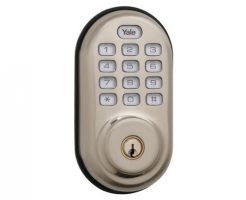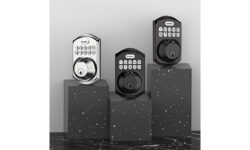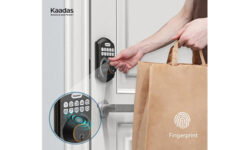Why Z-Wave Is the Fastest, Most Secure Smart Home Tech for Security Integrators
Find out why Z-Wave products are well-suited for security integrators looking to expand their home automation and IoT offerings.

Between concerns over cybersecurity being at an all-time high and the rise of home automation, security integrators need smart home technology they can trust.
Not only does the technology need to be secure, it needs to also be fast and play nice with a wide range of smart home devices.
According to Johan Pedersen, product marketing manager for Z-Wave chipmaker Sigma Designs, “90% of North American security company-based lifestyle solutions are powered by Z-Wave, as the vast majority of the companies that manufacture security panels use Z-Wave.”
Here’s how Z-Wave is earning the trust of the security industry.
The Latest in Smart Home Security
In November 2016, the Z-Wave Alliance, an open consortium of leading global companies deploying the Z-Wave smart home standard, voted unanimously to require mandatory implementation of the new Security 2 (S2) framework, calling it “the most advanced security for smart home devices and controllers, gateways and hubs in the market today.”
Johan Pedersen says the S2 framework makes Z-Wave the most secure protocol available today.
“Authenticated deployments remove the “man-in the middle” attack vector. S2 devices need to be physically authenticated via PIN or QR code during inclusion to the network. S2 tunnels all Z/IP traffic through a secure TLS 1.1 tunnel to eliminate cloud vulnerability as well,” Pedersen explains.
Developed side-by-side with encryption experts, S2 features improved protection against eavesdropping by using the industry standard Elliptic Curve Diffie-Hellman (ECDH) key exchange which makes it all but impossible to decipher the network key to gain unauthorized access.
Battery Life and Signal Range
Pedersen says the S2 framework provides a solution for all nodes in the network, insuring maximum security and protection for the whole network while simultaneously reducing latency, which can also improve power consumption compared to existing devices on the market.
“S2 was designed to improve security of Z-Wave devices while alleviating device manufacturer pain points (i.e. latency and power consumption) so that there are zero drawbacks for device manufacturers to implement S2,” explains Pedersen.
As a mesh network, the more Z-Wave devices in a home, the stronger the network becomes. So while obstacles within a home typically reduce the range of wirless signals, Z-Wave’s mesh networking allows a Z-Wave signal to pass or hop through other Z-Wave products to reach the device being controlled.
The range between two Z-Wave products without walls or other obstacles is about 100 meters. Z-Wave repeaters are also available that can work around walls so the signal can continue to the device. Z-Wave supports up to 4 hops, with the maximum range of about 200 meters, according to Mitch Klein, executive director, Z-Wave Alliance.
Vast Device Compatibility
While Z-Wave may be best known for security, it’s no slouch in the compatibility department either. In fact, Klein says the Z-Wave ecosystem consists of over 2,100 certified interoperable smart home devices that are all compatible with each other.
“Z-Wave is the only low-power, medium-bandwidth HAN/LAN technology with interoperability. Z-Wave has a robust technical and market certification program that ensures that all products that carry the Z-Wave brand are guaranteed to be interoperable, backwards compatible and future-proof,” Klein explains.
The Z-Wave Alliance, first mentioned above, includes some of the largest names in the security and home automation industry, including ADT, Nortek, Honeywell, Bosch, DMP and countless others. In fact, the Alliance welcomed its 600th member earlier this year.
While studies show smart home device adoption and awareness continues to increase, a new report also shows that only 42% of new security installations include a smart home device. Further proof that its time to embrace interactive services and smart controls.
With the support of the industry as well as its advanced security, reasonable power consumption and compatibility, Z-Wave has become a serious option for security integrators.
The Z-Wave Alliance has even created a Z-Wave Certified Installer Toolkit specifically for installing members of the Alliance. The toolkit is a powerful tool for testing networks and troubleshooting and diagnosing problems.
Need some inspiration? View the slideshow above for a gallery of security-related Z-Wave certified products.
If you enjoyed this article and want to receive more valuable industry content like this, click here to sign up for our FREE digital newsletters!

Security Is Our Business, Too
For professionals who recommend, buy and install all types of electronic security equipment, a free subscription to Commercial Integrator + Security Sales & Integration is like having a consultant on call. You’ll find an ideal balance of technology and business coverage, with installation tips and techniques for products and updates on how to add to your bottom line.
A FREE subscription to the top resource for security and integration industry will prove to be invaluable.

















Hello, after reading this awesome post i am too happy to
share myy familiarity here wiyh colleagues.